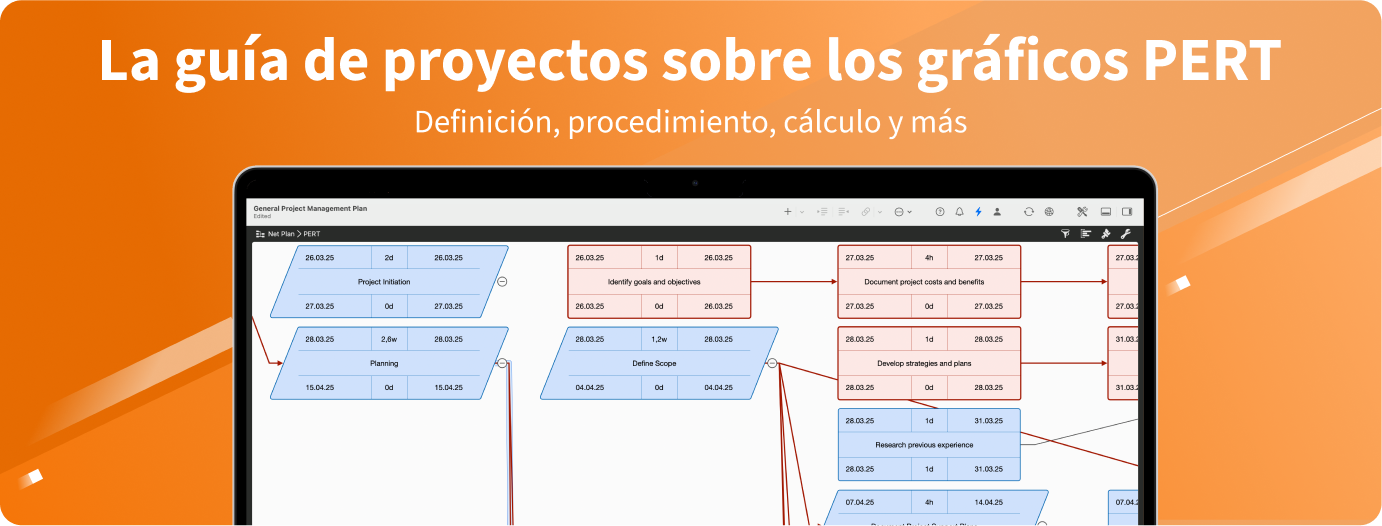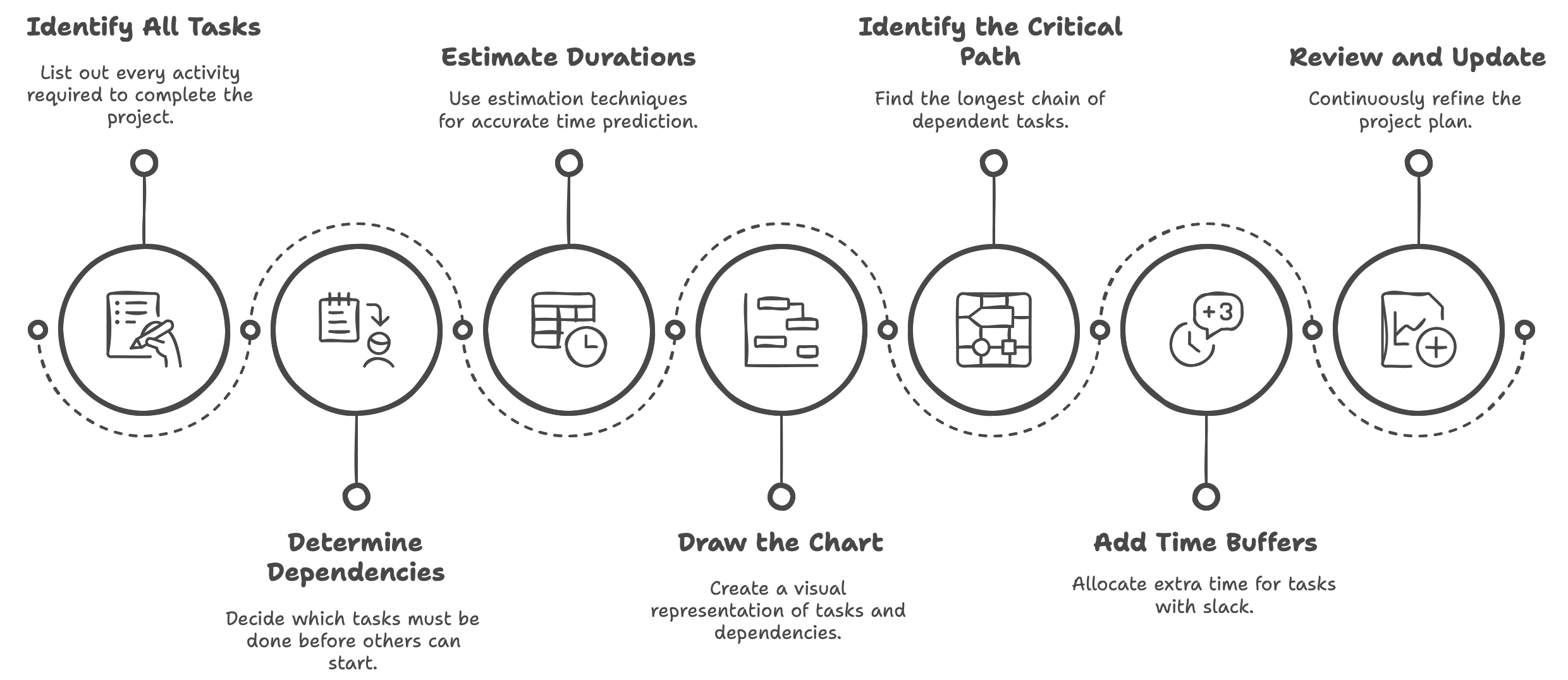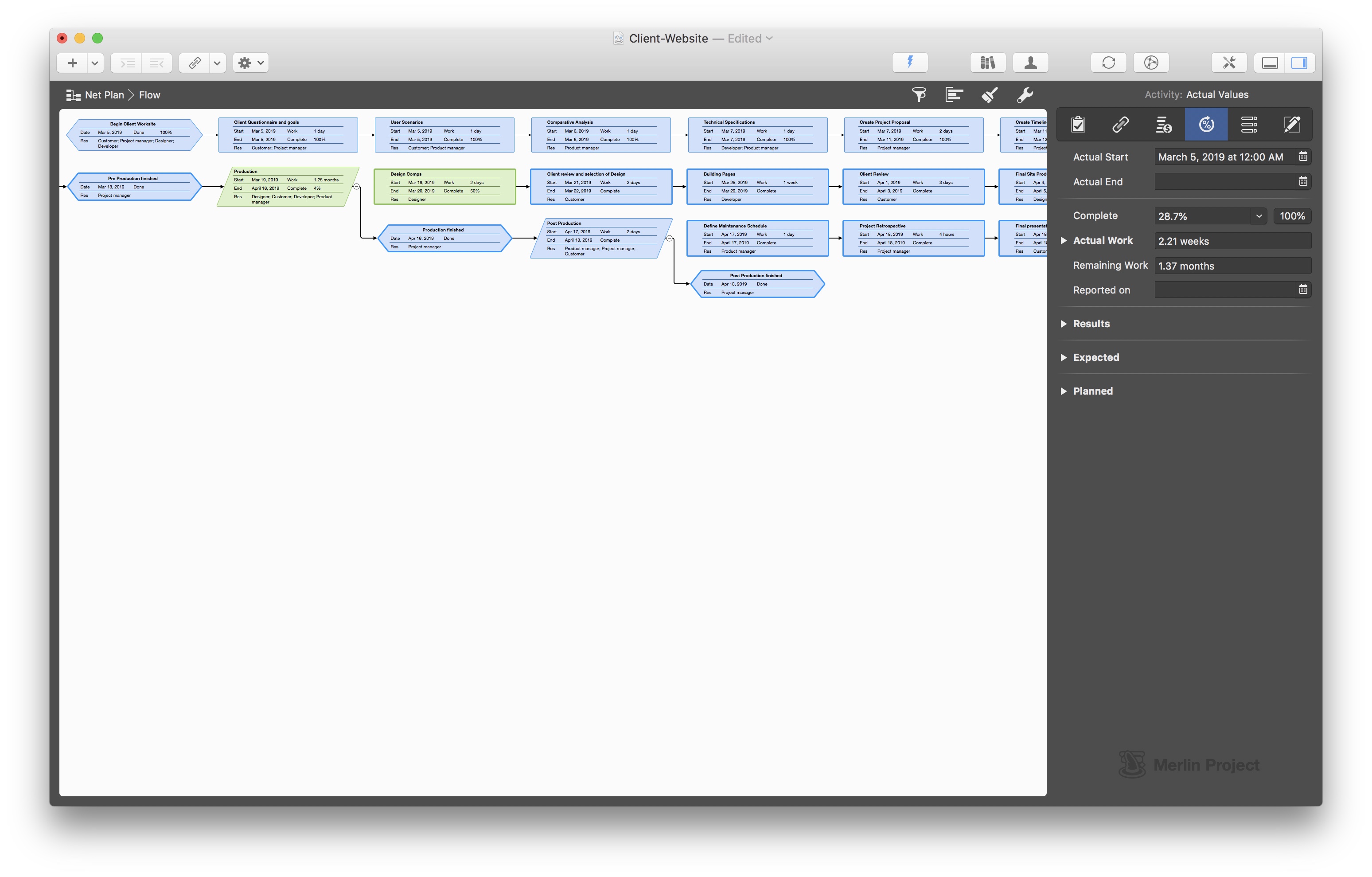Gestión de Proyectos con un Toque de Magia
Planifica, gestiona y entrega proyectos de forma eficiente. Merlin Project para macOS y iOS

Los diagramas PERT son una herramienta básica de gestión de proyectos para organizar, programar y coordinar actividades. Conozca las ventajas y desventajas de este método.
Tabla de Contenidos
¿Qué es un diagrama PERT?
Ventajas y desventajas de un diagrama PERT
Metodología clave de PERT: cálculo del tiempo
Cómo crear un diagrama PERT paso a paso
Cuándo usar un diagrama PERT frente a otras herramientas
Ejemplo: cálculo de la duración de una tarea con PERT
Consejos prácticos
Conclusión
Un diagrama PERT (Program Evaluation and Review Technique) es una herramienta de gestión de proyectos diseñada para visualizar las actividades de un proyecto, sus dependencias lógicas y su secuencia cronológica. Va más allá de la estructura de desglose del trabajo (WBS), resaltando no solo las relaciones entre las tareas, sino también el orden en que deben ejecutarse. De esta manera, los jefes de proyecto pueden identificar la ruta crítica (es decir, la secuencia de tareas que determina directamente la duración total del proyecto) y posibles márgenes de tiempo (slack).
Consejo: Explore Merlin Project Learning Path para más consejos y trucos de gestión de proyectos
| Ventajas | Desventajas |
|---|---|
| La elaboración requiere considerar el proyecto completo, no solo partes aisladas. Así se hacen visibles puntos pendientes. | Su creación resulta relativamente compleja. |
| El plan de red ofrece una visión clara de todas las actividades del proyecto y sus dependencias mutuas. | La presentación requiere capacitación para comprender completamente la información. |
| El plan se puede actualizar fácilmente. | Mientras más detallado sea el plan, mayor será el esfuerzo de control para evitar errores de planificación. |
| Es posible una programación relativamente precisa, con el consiguiente ahorro de costos. | El método está sobredimensionado para proyectos pequeños. |
| Es fácil reconocer cuellos de botella (ruta crítica y márgenes de tiempo). | |
| El plan de red puede desarrollarse independientemente de las suposiciones de calendario. | |
| Sirve como una herramienta de comunicación clara para los responsables del proyecto. |
Consejo: La técnica de plan de red (incluyendo diagramas PERT) resulta especialmente útil en proyectos grandes o complejos. Para proyectos más simples o de menor alcance, quizá sean más intuitivos y prácticos los métodos ágiles con tableros Kanban o los diagramas de Gantt.
Una característica distintiva del método PERT es su enfoque para estimar la duración de las tareas. En lugar de una sola cifra, PERT utiliza tres estimaciones para contemplar la incertidumbre:
Con estas tres estimaciones, PERT calcula la duración esperada (TE) de cada actividad usando la fórmula típica:
TE = (O + 4M + P) / 6
También puede calcular la varianza o desviación estándar para evaluar la probabilidad de terminar a tiempo, aunque muchas aplicaciones modernas de gestión de proyectos (como Merlin Project) automatizan estos cálculos.
Aunque la mayoría de los programas de gestión de proyectos automatizan gran parte del trabajo, es importante entender el proceso básico:

Identifique todas las tareas
Determine dependencias
Estime las duraciones
Dibuje el diagrama
Identifique la ruta crítica
Agregue márgenes de tiempo
Revise y actualice

En la gestión de proyectos actual existen diversos métodos y herramientas, cada uno adaptado a distintos tipos y tamaños de proyecto:
Punto clave: PERT puede integrarse en marcos de trabajo híbridos. Algunos equipos usan un diagrama PERT para la planificación global y un tablero Kanban o Scrum para la gestión diaria de tareas.
Imagine que tiene la tarea Desarrollar prototipo
Usando la fórmula de PERT:
TE = (O + 4M + P) / 6TE = (5 + 4*8 + 14) / 6TE = (5 + 32 + 14) / 6 = 51 / 6 ≈ 8,5 días
Por lo tanto, planificaría alrededor de 8.5 días para esta tarea. Muchas herramientas de gestión de proyectos permiten ingresar estas tres estimaciones y realizan el cálculo automáticamente.
Un diagrama PERT es mucho más que un simple gráfico estático: es una herramienta estratégica de planificación que lo ayuda a concebir proyectos complejos, localizar la ruta crítica y contemplar la incertidumbre en las estimaciones de tiempo. Aunque requiere un esfuerzo inicial mayor que métodos más sencillos, como los diagramas de Gantt o los tableros Kanban, aporta un valor inestimable en proyectos de gran envergadura y alta complejidad.
Dado que las aplicaciones modernas automatizan gran parte de los cálculos, curvas de aprendizaje y actualizaciones, incorporar PERT a su flujo de trabajo puede elevar notablemente su capacidad de gestión de proyectos.
Sus ideas, nuestra magia – ¡realice proyectos de forma sencilla!
Pruebe ahora 30 días de forma gratuita.
